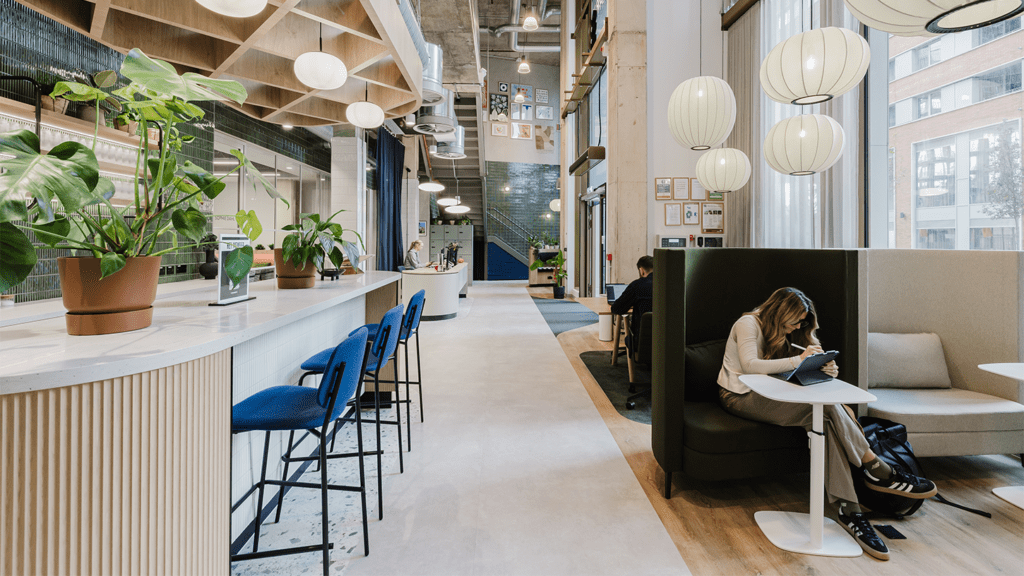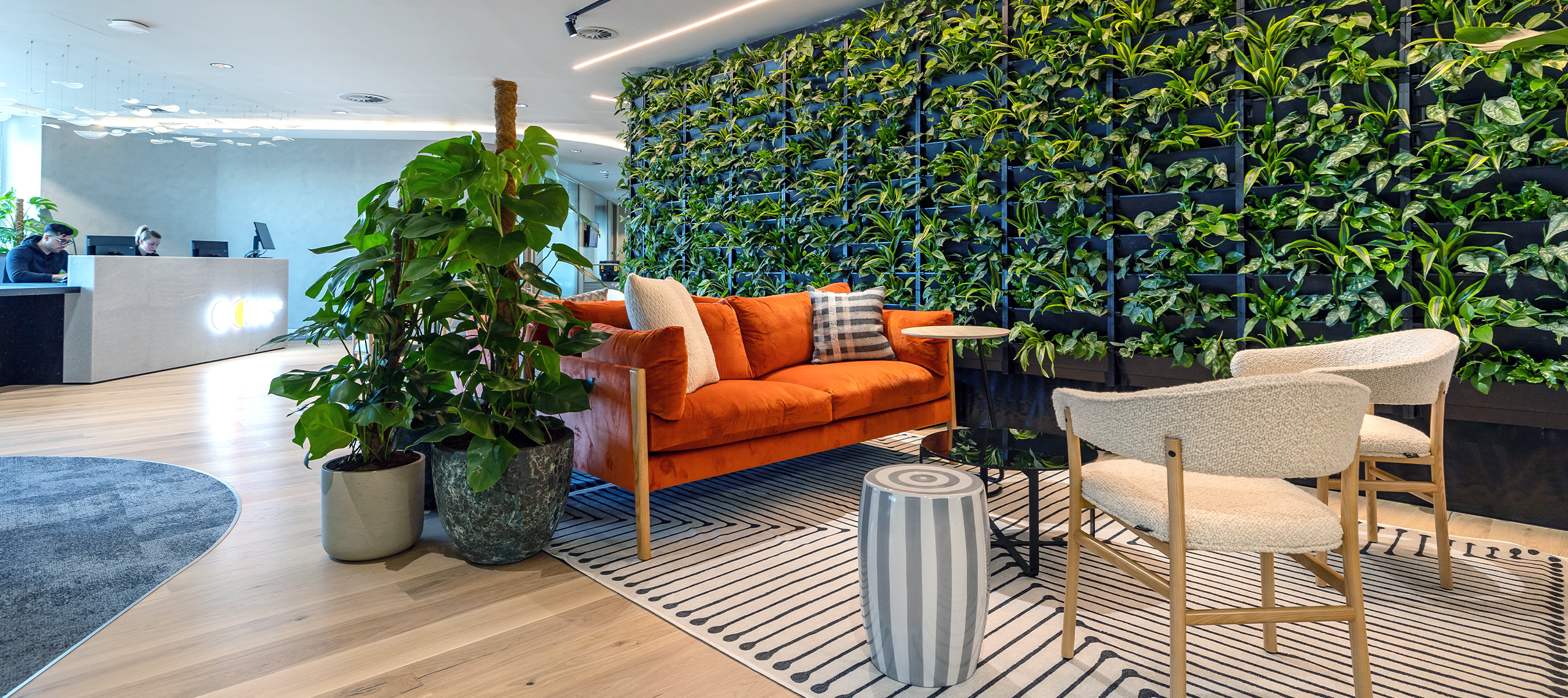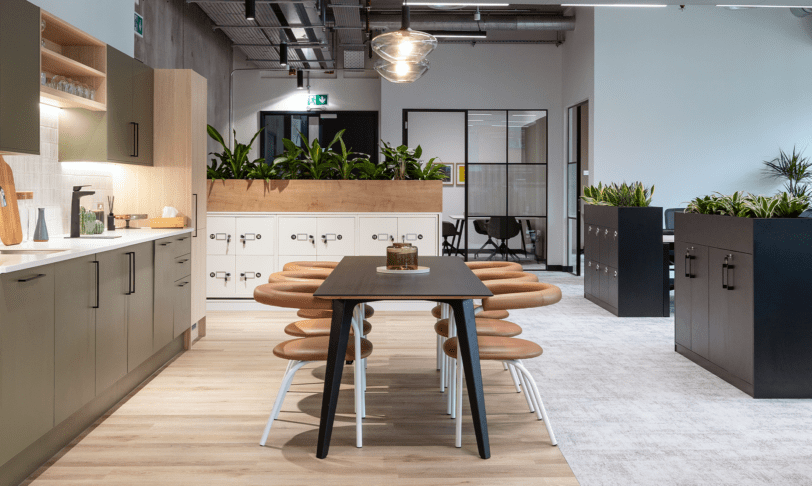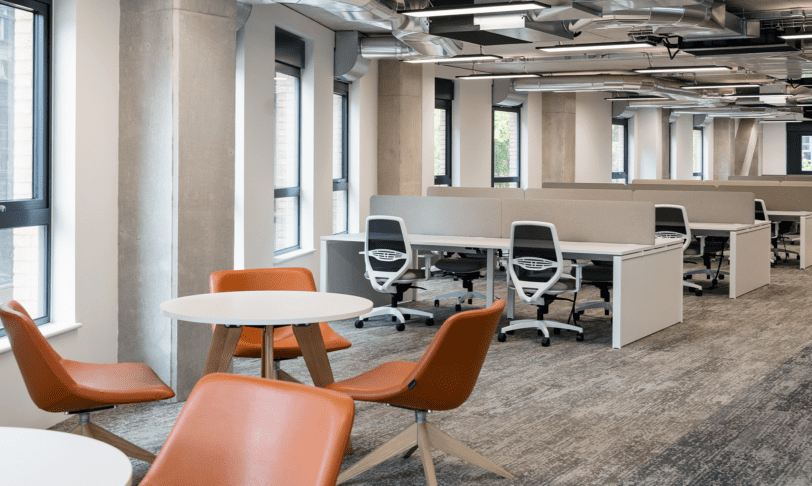Sustainable real estate solutions: building net-zero offices
As global environmental targets tighten and tenant expectations evolve, net-zero offices have moved from a niche ambition to a strategic imperative. For fund managers, asset owners and commercial property developers, investing in net-zero building design goes beyond environmental responsibility, becoming a key driver of long-term asset value, tenant attraction, and investment resilience.
High-value tenants are seeking modern, healthy, and efficient workspaces that mirror their own sustainability commitments. The good news? Developing and marketing eco-friendly office buildings is a sound business decision, supported by data, incentives, and long-term performance benefits.
Here’s how commercial landlords and institutional investors can adopt sustainable real estate solutions and position themselves at the forefront of the net-zero office movement.
Environmental challenges in commercial real estate
Commercial property is at a pivotal moment. The built environment is responsible for nearly 40% of global carbon emissions, with a significant share stemming from operational energy use in office buildings. As a result, pressure is mounting on real estate investors to decarbonise their portfolios.
The Sustainable Finance Disclosure Regulation (SFDR) in the EU now requires asset managers to disclose how sustainability risks are integrated into their investment decisions. Meanwhile, the SEC Climate Disclosure Rules in the US are pushing for greater climate-related transparency. In the UK, the government’s legally binding 2050 Net-Zero Target is driving both public and private sector organisations to re-evaluate their carbon footprints, with the real estate sector firmly in the spotlight.
This regulatory wave is about maintaining a competitive advantage in a rapidly evolving marketplace while also ensuring compliance. Net-zero offices are increasingly becoming the benchmark for Class A spaces, with investors facing rising risks of “brown discounting” for assets that fail to meet evolving sustainability standards.
The increasing demand for net-zero buildings
Sustainable offices have shifted from being a perk to a priority. In a global survey by JLL, 74% of occupiers said they were willing to pay a premium for environmentally sustainable spaces. The demand is especially pronounced among blue-chip tenants, many of whom have set their own net-zero targets and require office space that supports ESG-aligned operations.
For landlords, this presents both a challenge and an opportunity. Net-zero design significantly enhances asset marketability, enabling higher rents, longer leases, and lower vacancy rates. Additionally, a recent McKinsey report highlights that buildings aligned with ESG criteria enjoy 6-10% higher valuations on average compared to their non-aligned peers.
In short, sustainable real estate solutions are a clear differentiator, particularly in high-demand urban centres where competition for prime tenants is fierce.

What are high-value tenants looking for?
Today’s high-value tenants, especially multinationals and ESG-conscious corporates, are making leasing decisions based on a broader set of criteria. Green credentials, while important, are only one part of the equation.
- Certifications matter. Tenants are actively seeking office spaces with BREEAM, LEED, NABERS and WELL ratings, which signal a building’s environmental and human-centric performance.
- Energy efficiency is non-negotiable. With energy costs rising and Scope 3 emissions under scrutiny, tenants want to occupy buildings that reduce their operational carbon footprint.
- Smart building technology is increasingly valued, offering real-time data on energy use, occupancy, and indoor air quality, all crucial for ESG reporting.
- Employee well-being remains central. Tenants want flexible and healthy spaces that support productivity, retention, and a strong workplace culture – key priorities in the era of hybrid work.
As companies compete for talent, office space has become a strategic tool. High-performing workplaces are now central to organisational success, not just operational logistics.
The benefits of net-zero office spaces
For landlords and investors, net-zero offices offer a powerful combination of carbon reduction, along with financial, strategic, and environmental benefits.
- Long-term ROI: Sustainable offices benefit from reduced operational costs over time. Research shows that LEED-certified green buildings report nearly 20% lower maintenance costs than typical commercial buildings. Additionally, green buildings often consume less water and energy due to more efficient systems, lowering long-term expenses.
- Future-proofing: As regulations tighten, assets that fail to meet net-zero standards risk becoming stranded. In contrast, sustainable buildings are more likely to retain value and appeal over the long term.
- Premium returns: Sustainable assets command higher rental yields. Various studies show that certified green buildings achieve notable financial benefits. For example, LaSalle Investment Management reports that green-certified properties can attract sale prices up to 25% higher than non-certified buildings.
- Access to green finance: Net-zero assets unlock access to sustainability-linked loans, tax incentives and green bonds, reducing capital costs and appealing to ESG-aligned investors.
In essence, eco-friendly office buildings benefit both the planet and business performance.
Key strategies for commercial property owners
Building a truly net-zero office requires more than a few rooftop solar panels. It demands a holistic, forward-thinking approach from concept to completion.
Here’s how commercial landlords can turn vision into value:
- Smart energy systems: Deploy intelligent energy management to monitor and reduce consumption in real time. This includes HVAC optimisation, smart lighting and predictive analytics.
- Onsite renewable energy: Solar PV systems, heat pumps, and even wind turbines can drastically cut reliance on grid energy, especially when paired with energy storage.
- Circular design principles: Use low-carbon materials, prioritise reuse and recyclability, and design for disassembly to support a circular economy.
- Biophilic design & wellness: Integrate natural materials, living walls, and daylight to promote wellbeing and enhance indoor environmental quality.
- Flexibility & future-proofing: Incorporate modular layouts, demountable partitions and adaptable infrastructure to meet changing tenant needs.
At Interaction, we create CAT A+ spaces designed for today’s needs, with the adaptability to meet tomorrow’s demands.

Leading sustainable office developments
There are already stellar examples in the UK of net-zero offices leading the way in both design and performance.
The Forge, Southwark, London
Located in London’s Bankside, The Forge is celebrated as the UK’s first net-zero carbon commercial building. Developed by Landsec, this project comprises two office buildings, Bronze and Phosphor, surrounding a public courtyard. The development showcases innovative construction techniques, including a platform approach to design for manufacture and assembly (P-DfMA), which significantly reduces embodied carbon. The Forge operates entirely on electricity, sourced from 100% renewable energy, and features 298m² of green roofing to enhance biodiversity.
Key features:
- All-electric energy systems powered by renewable electricity
- Green roofing to promote biodiversity
- P-DfMA construction method reducing embodied carbon
100 Liverpool Street, London
British Land’s redevelopment of 100 Liverpool Street stands as a testament to sustainable design in urban settings. This project transformed an existing 1980s structure into a modern, ultra-low carbon office space. By retaining significant portions of the original building’s steel frame and concrete foundations, the development achieved substantial embodied carbon savings. The building has earned a BREEAM ‘Outstanding’ rating and is British Land’s first net-zero carbon building.
Key features:
- Retention and reuse of 32% of the existing steel frame and 49% of concrete foundations
- Use of lower carbon materials, including 51% secondary aggregates and 44% cement replacement
- Implementation of smart building technologies and WELL Gold certification
Marketing net-zero offices to high-value tenants
Strategic marketing is key to showcasing a net-zero building’s value and attracting high-calibre tenants.
- Data transparency: Use digital tools and certifications to clearly demonstrate net-zero outcomes. Transparency is a key decision driver for tenants and investors.
- Tech-enabled management: Smart property systems enable proactive maintenance, predictive analytics, and seamless tenant engagement, key selling points in a tech-driven market.
- Leasing strategies: Promote sustainability credentials in commercial listings and tailor messaging to tenant ESG goals. Offering tenant fit-out guidance aligned with sustainability standards can further differentiate your proposition.
Demonstrating how a space aligns with tenant priorities can turn initial interest into long-term commitment.
Net-zero design offers fund managers and landlords a strategic path to future-proof portfolios, attract ESG-driven tenants, and maintain regulatory alignment. At Interaction, we’re committed to designing and delivering eco-friendly office buildings that go beyond compliance. Our strategic, people-first approach ensures every workspace is functional, inspiring, and built for a net-zero future.
Now is the time to align portfolios with the future of work – because uninspired offices have no place in a net-zero world. Contact us today.



